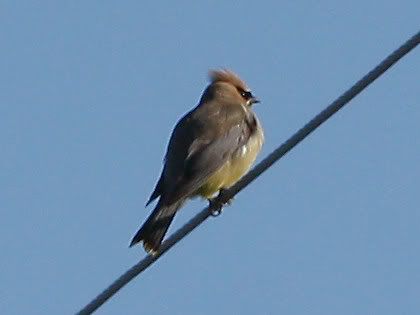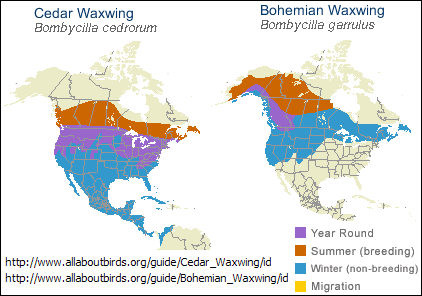
I think this is a Cedar Waxwing.
Supposed to be a very social bird? This was the one lone bird I saw around our place Wednesday morning 9 Sep 09. He looked odd to me, like he was sick or something. He did not move. Perhaps gorged on berries and unable to fly? We do have lots of berries around here right now.
npwrc
Cedar Waxwing (Bombycilla cedrorum)
One can expect to see the cedar waxwing year round and the Bohemian waxwing during the winter.
Cedar waxwings are fruit eaters and their social feeding habits are influenced by this fact. They are often seen feeding in small flocks on the berries of cedar trees, mountain ash, and flowering crabapple. Waxwings will often gorge themselves on berries until they are unable to fly and will often become "drunk" on overripe berries.
The term waxwing is derived from the red waxy deposits on the tips of their secondary wing feathers.
enature
Waxwings spend most of the year in flocks.
Waxwings tend to nest late in the summer when there is a good supply of berries.
cornell
In fall these birds gather by the hundreds to eat berries.
In North Dakota year-round?
ndgf rated Uncommon - occurs in low numbers.
Bohemian Waxwing (Bombycilla garrulus):
at enature
Similar to Cedar Waxwing but larger, grayer, and with conspicuous white wing patches and rusty (not white) undertail coverts.
What's interesting about the Bohemian Waxwing is he doesn't breed in North Dakota and seldom is seen til winter. Yeah, a bird that actually comes here in the winter.
at cornell
The Bohemian Waxwing is an irregular winter visitor from the far North. It comes primarily to states and provinces along the United States/Canada border, a bit farther southward in the West.
Range Maps Comparison:


1 comment:
this is a very informative website. :)
Post a Comment